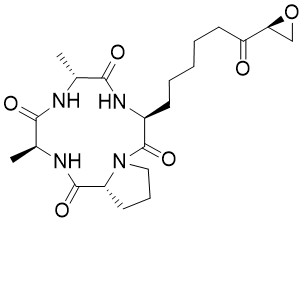HC-Toxin
Cyclic tetrapeptides are natural products with interesting biological properties. Several cyclic tetrapeptides act as histone deacetylase inhibitors (HDACi) or as host-specific toxins (HST). In 1995, Walton observed the activity of HC-toxin against HDACs isolated from maize, while in 2004, the HC-toxin was found to be also effective against T47D breast cancer cells.
- R. B. Pringle, R. P. Scheffer, "Isolation of the host-specific toxin and a related substance with nonspecific toxicity from Helminthosporium carbonum", Phytopathology 1967, 57, 1169–1172.
- G. Brosch, R. Ransom, T. Lechner, J. D. Walton, P. Loidl, "lnhibition of Maize Histone Deacetylases by HC Toxin, the Host-Selective Toxin of Cochliobolus carbonum", Plant Cell 1995, 7, 1941–1950.
- K. E. Joung, D.-K. Kim, Y. Y. Sheen, "Antiproliferative Effect of Trichostatin A and HC-Toxin in T47D Human Breast Cancer Cells", Arch. Pharm. Res. 2004, 27, 640–645.
A new synthetic route toward the host-specific HC-toxin was developed. The HC-toxin belongs to a group of cyclic, tetrapeptide histone deacetylase inhibitors containing the unusual amino acid Aeo. Key steps in the synthesis of this building block include the Matteson homologation to generate the stereogenic centers in the side chain and a C-H-functionalization to connect the side chain to a protected alanine.
- M. Kohr, U. Kazmaier, "Synthesis of HC-Toxin via Matteson Homologation and C-H-Functionalization", J. Org. Chem. 2023, 88, in press.

